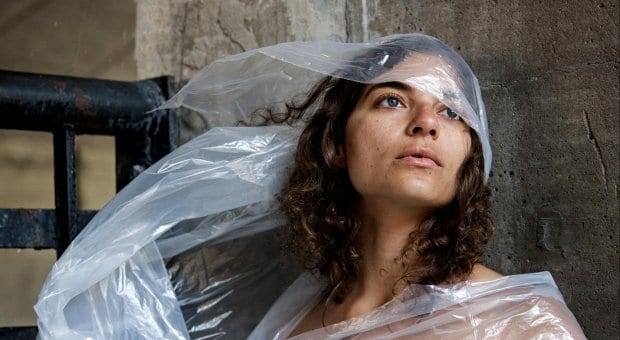
Credit: Julie Laurin

Credit: Julie Laurin
Julie Laurin sends a text message to tell me she’s having a cigarette but “will be up shortly” for our interview. When the 36-year-old photographer does arrive, she gazes at me intensely, as if she can see something I can’t.
Based in Ottawa, Laurin is the only openly queer photographer selected for Naked in the House, one of Canada’s premier photography competitions. She’ll compete with 11 others from across Canada and have 30 minutes to take 12 shots of a nude model in an old Toronto home without additional lighting, lens, retouching or even the ability to adjust her camera while shooting.
It is an intense, high-pressure challenge. Of the 12 shots, each photographer chooses three to feature in the show’s auction — where more than 2,000 guests bid on a winner.
“This is a whole new world, this competition,” Laurin says, excited, noting she discovered photography “by accident.”
“I got a point-and-shoot camera from my parents, and I took photos of myself and other random stuff. Then I started photographing my lovers . . . from there I learned about light and body, and I found I could be creative — it was liberating.”
But when she was 18, Laurin’s family dynamic changed. She came out to her mother, who promptly kicked her out of the family home. “I left with the clothes on my back,” she says. “I stayed in touch with my parents but at a distance. It wasn’t until years later when they realized I wasn’t going to change that they started to be accepting. Today we are close again.
“I think it is more confusing for them now, because I don’t consider myself a lesbian. I thought I was gay in my 20s, but now I am homo-flexible. I don’t tend to fall in love with men, but I do get intrigued,” she says.
Laurin works from home as a software quality-assurance technician. It’s a job that allows her flexibility and time for her art. “I do the photography for myself with full creative freedom. In this world, you have to give freedom up if you want to be commercially successful.”
Not so for Laurin. “I have placed women in bondage, made women ugly, and that would never typically sell.”
Laurin’s been a fixture in Ottawa’s arts community for some time, known for her photographs of noted queer performers, such as Margo McDonald and Guy Marsan, many of which have been featured on posters or in local media.
In the fall of 2012, she held her first professional exhibition at Bode Spa. “I showed a series of women in dark and did not use any effects or filters,” she says.
“Photographing women together has been very freeing. I love dancing scenes or scenes where one woman is in control. I don’t like to shoot pretty, where you doll up your model. I like to bring out the ugly, emotional sides, because people are more beautiful on the inside.”
Shooting without filters and touchups makes Laurin unique to her other competitors at Naked in the House. Most are fashion photographers who shoot commercially or for weddings, so Laurin’s raw style might give her an advantage in the competition.
When asked what it would mean if she won, she says, “For me personally, it would be that I beat out all the professionals and proved that photography is about your eye and skill, not gear and fabrication. And showed that a queer woman can do it.
“Ultimately, my work is for me. I never want to do commercial work. I want to do queer work.”
For more on Naked in the House, go to nakedinthehouseonline.com.
Check out Laurin at julielaurin.com.

 Why you can trust Xtra
Why you can trust Xtra


